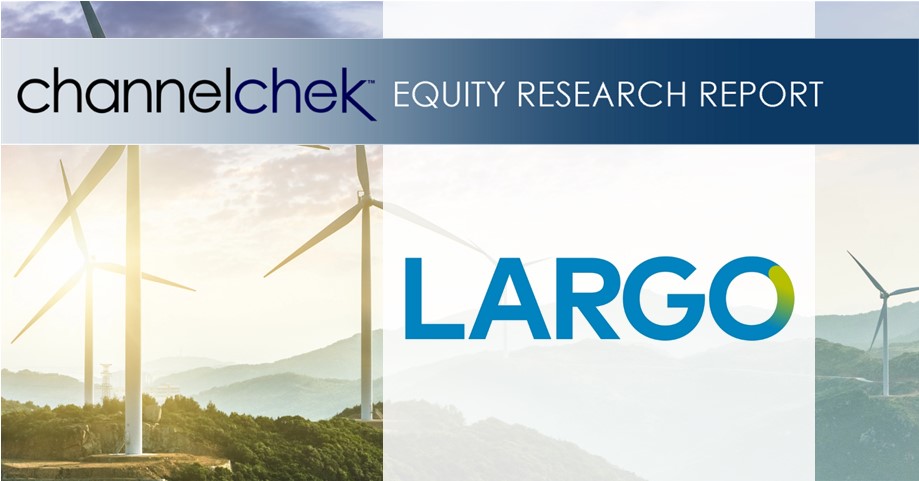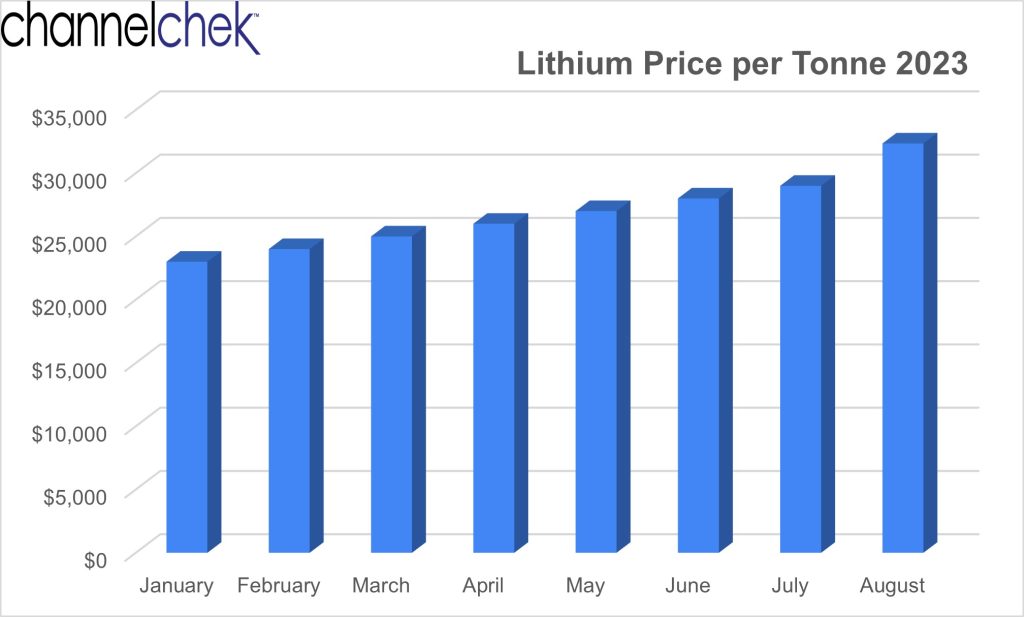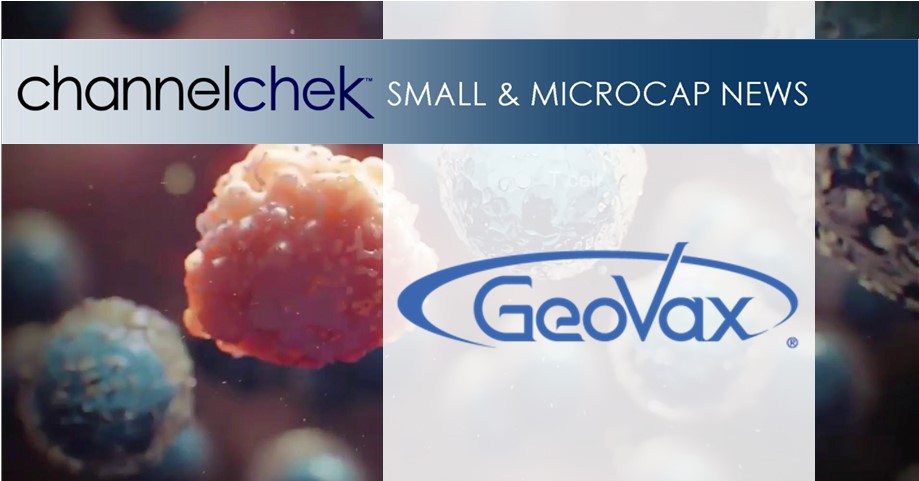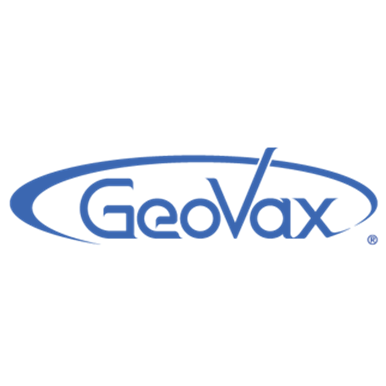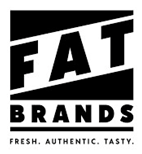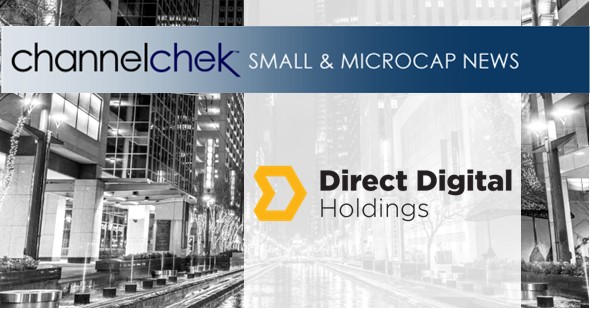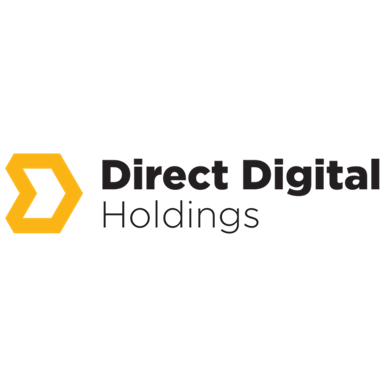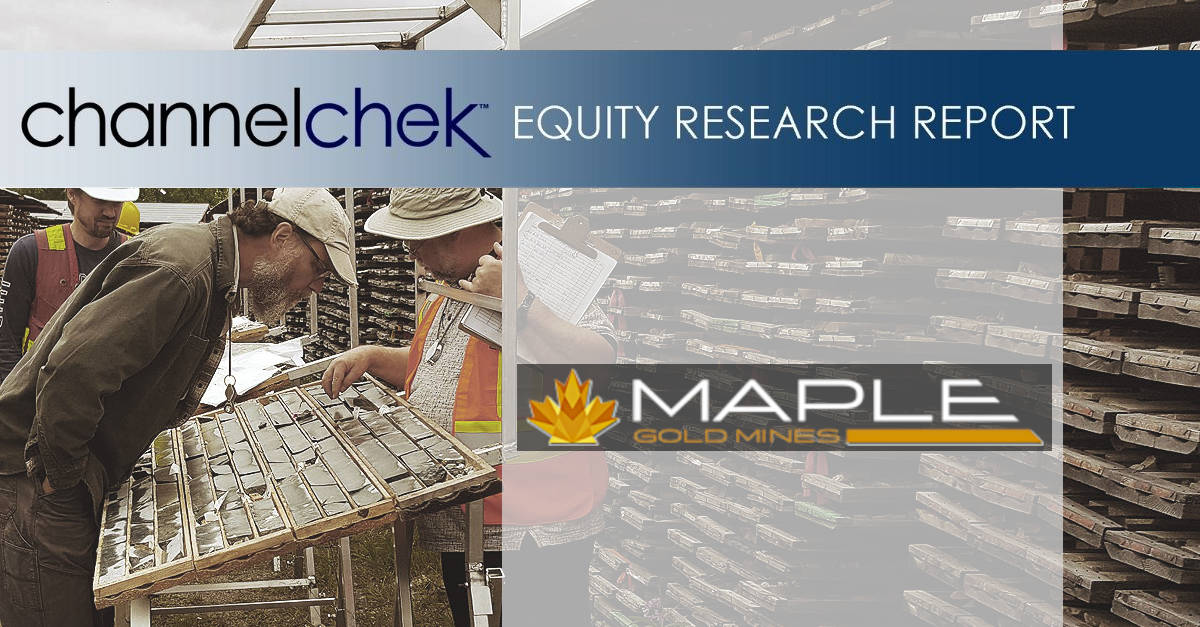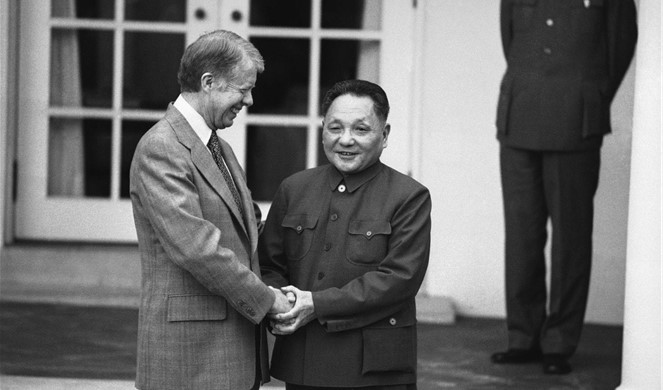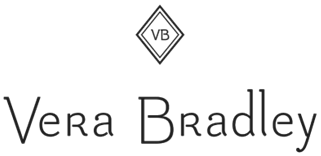
Research News and Market Data on VRA
Aug 30, 2023
Consolidated net revenues totaled $128.2 million
Net income totaled $9.3 million, or $0.30 per diluted share; non-GAAP net income totaled $10.2 million, or $0.33 per diluted share
Balance sheet strengthens, with cash and cash equivalents of $48.5 million, no debt, and year-over-year inventories down 22.4%
FORT WAYNE, Ind., Aug. 30, 2023 (GLOBE NEWSWIRE) — Vera Bradley, Inc. (Nasdaq: VRA) today announced its financial results for the second quarter and six months ended July 29, 2023.
In this release, Vera Bradley, Inc. or “the Company” refers to the entire enterprise and includes both the Vera Bradley and Pura Vida brands. Vera Bradley on a stand-alone basis refers to the Vera Bradley brand.
Second Quarter Comments
Jackie Ardrey, Chief Executive Officer of the Company, noted, “Our transformational efforts continue to bear fruit and are the result of the hard work of our associates across the country. We are very pleased with the meaningful year-over-year improvement in second quarter earnings, driven by significant gross margin expansion and successful expense reduction efforts. During the quarter, we carefully managed our debt-free balance sheet, adding to our cash position while continuing to strategically improve our inventory position.
“One of our key goals this year is to stabilize revenues. We continue to make progress on that front, with second quarter consolidated revenues of $128.2 million only modestly below last year.”
“Total second quarter revenues for the Vera Bradley brand were down 1.2% from last year,” Ardrey commented. “Vera Bradley Direct revenue declines resulted from store closures over the last year, while we saw a small comparable store gain in our full line stores. The successful return of the Vera Bradley Annual Outlet Sale offset weakness we experienced in our factory outlet stores in addition to compensating for the elimination of one online outlet sale during the quarter. The remainder of our e-commerce sales continued to perform well. Lastly, Vera Bradley Indirect revenues were up slightly to last year.
“Pura Vida year-over-year sales declined 3.6%, primarily related to a shortfall in wholesale revenues, which we believe will improve in the second half of the year. Store sales remained strong, and we began to realize the benefits of changes in our performance-based marketing program.
“In general, at both brands, customers have responded enthusiastically to our collaborations and to our product offerings when they are innovative and trend-right, even as they have been more selective in their discretionary spending in light of the current macro environment.”
Ardrey continued, “We are taking strategic actions to stabilize and steadily grow Pura Vida’s revenues and to reverse the trends in Vera Bradley’s factory outlet stores through a thorough, multi-pronged approach, including potential pricing adjustments and targeted marketing initiatives aimed to drive traffic and average order size. Our team is focused on generating long-term revenue increases, expanding gross margin, and ensuring strong financial discipline and cost control, which we expect will drive long-term profitable growth.”
Ardrey added, “We continue to make meaningful progress on Project Restoration, focusing on four key pillars of the business for each brand – Consumer, Brand, Product, and Channel. Through the first half of Fiscal 2024, we have progressed as expected. We anticipate execution of Project Restoration will drive this long-term profitable growth and deliver value to our shareholders.”
Summary of Financial Performance for the Second Quarter
Consolidated net revenues totaled $128.2 million compared to $130.4 million in the prior year second quarter ended July 30, 2022.
For the current year second quarter, Vera Bradley, Inc.’s consolidated net income totaled $9.3 million, or $0.30 per diluted share. These results included $0.9 million of net after tax charges, comprised of $0.6 million for the amortization of definite-lived intangible assets, $0.2 million of consulting fees primarily associated with strategic initiatives, and $0.1 million of severance charges. On a non-GAAP basis, Vera Bradley, Inc.’s consolidated second quarter net income totaled $10.2 million, or $0.33 per diluted share.
For the prior year second quarter, Vera Bradley, Inc.’s consolidated net loss totaled ($29.8) million, or ($0.95) per diluted share. These results included $32.2 million of net after tax charges, comprised of $18.2 million of Pura Vida goodwill and intangible asset impairment charges, $4.7 million of inventory adjustments associated with the exit of certain technology products and the write-off of excess mask inventory, $4.7 million of severance charges and other employee costs, $2.3 million of consulting fees associated with cost savings initiatives and CEO search, $0.9 million of purchase order cancellation fees for spring 2023 goods, $0.6 million of store impairment charges, $0.5 million of intangible asset amortization, and $0.3 million of goodMRKT exit costs. On a non-GAAP basis, Vera Bradley, Inc.’s prior year consolidated second quarter net income totaled $2.4 million, or $0.08 per diluted share.
Summary of Financial Performance for the Six Months
Consolidated net revenues totaled $222.5 million for the current year six months ended July 29, 2023, compared to $228.8 million in the prior year six month period ended July 30, 2022.
For the current year six months, Vera Bradley, Inc.’s consolidated net income totaled $4.6 million, or $0.15 per diluted share. These results included $3.0 million of net after tax charges, comprised of $1.5 million of severance charges, $1.1 million for the amortization of definite-lived intangible assets, and $0.4 million of consulting and professional fees primarily associated with strategic initiatives. On a non-GAAP basis, Vera Bradley, Inc.’s consolidated net income for the six months totaled $7.6 million, or $0.24 per diluted share.
For the prior year six months, Vera Bradley, Inc.’s consolidated net loss totaled ($36.7) million, or ($1.15) per diluted share. These results included $33.1 million of net after tax charges, comprised of $18.2 million of Pura Vida goodwill and intangible asset impairment charges, $4.7 million of inventory adjustments associated with the exit of certain technology products and the write-off of excess mask inventory, $4.7 million of severance charges and other employee costs, $2.4 million of consulting fees associated with cost savings initiatives and CEO search, $1.0 million of store and right-of-use asset impairment charges, $0.9 million of purchase order cancellation fees for spring 2023 goods, $0.9 million of intangible asset amortization, and $0.3 million of goodMRKT exit costs. On a non-GAAP basis, Vera Bradley, Inc.’s prior year consolidated net loss for the six months totaled ($3.6) million, or ($0.11) per diluted share.
Non-GAAP Numbers
The current year non-GAAP second quarter and six-month income statement numbers referenced below exclude the previously outlined severance charges, intangible asset amortization, and consulting and professional fees. The prior year non-GAAP second quarter and six-month income statement numbers referenced below exclude the previously outlined goodwill and intangible asset impairment charges, inventory adjustments, severance charges and other employee costs, consulting fees, store and right-of-use asset impairment charges, purchase order cancellation fees, intangible asset amortization, and goodMRKT exit costs.
Second Quarter Details
Current year second quarter Vera Bradley Direct segment revenues totaled $85.7 million, a 1.5% decrease from $87.0 million in the prior year second quarter. Comparable sales declined 5.3% in the second quarter, primarily driven by weakness in the factory outlet channel. The Company permanently closed 19 full-line and two factory outlet stores and opened three factory outlet stores over the last twelve months. This year, the Direct segment revenues included sales from the Vera Bradley Annual Outlet sale, which was not held last year.
Vera Bradley Indirect segment revenues totaled $17.4 million, a 0.2% increase over $17.3 million in the prior year second quarter.
Pura Vida segment revenues totaled $25.1 million, a 3.6% decrease from $26.0 million in the prior year, reflecting a decline in sales to wholesale accounts and a modest decline in ecommerce sales, partially offset by new store growth resulting in non-comparable retail store sales.
Second quarter consolidated gross profit totaled $72.0 million, or 56.2% of net revenues, compared to $60.5 million, or 46.4% of net revenues, in the prior year. On a non-GAAP basis, prior year gross profit totaled $67.8 million, or 52.0% of net revenues. The current year gross profit rate compared to the prior year non-GAAP rate was favorably impacted by lower year-over-year inbound and outbound freight expense and the sell-through of previously-reserved inventory, partially offset by an increase in promotional activity. Prior year gross profit was materially impacted by high inbound and outbound freight expense and deleverage of overhead costs.
Second quarter consolidated SG&A expense totaled $59.4 million, or 46.3% of net revenues, compared to $74.0 million, or 56.8% of net revenues, in the prior year. On a non-GAAP basis, consolidated SG&A expense totaled $58.3 million, or 45.5% of net revenues, compared to $64.0 million, or 49.1% of net revenues, in the prior year. Vera Bradley’s current year non-GAAP SG&A expenses were lower than the prior year primarily due to Company-wide cost reduction initiatives across various areas of the enterprise.
The Company’s second quarter consolidated operating income totaled $12.9 million, or 10.0% of net revenues, compared to an operating loss of ($42.8) million, or (32.8%) of net revenues, in the prior year second quarter. On a non-GAAP basis, the Company’s current year consolidated operating income totaled $14.0 million, or 10.9% of net revenues, compared to $3.9 million, or 3.0% of net revenues, in the prior year.
By segment:
- Vera Bradley Direct operating income was $20.6 million, or 24.1% of Direct net revenues, compared to $10.0 million, or 11.5% of Direct net revenues, in the prior year. On a non-GAAP basis, prior year Direct operating income totaled $16.2 million, or 18.6% of Direct revenues.
- Vera Bradley Indirect operating income was $6.2 million, or 35.7% of Indirect net revenues, compared to $3.9 million, or 22.6% of Indirect net revenues, in the prior year. On a non-GAAP basis, prior year Indirect operating income totaled $4.9 million, or 28.4% of Indirect net revenues.
- Pura Vida’s operating income was $4.0 million, or 15.9% of Pura Vida net revenues, compared to an operating loss of ($28.5) million, or (109.6%) of Pura Vida net revenues, in the prior year. On a non-GAAP basis, Pura Vida’s operating income was $4.8 million, or 19.2% of Pura Vida net revenues, compared to $2.6 million, or 9.8% of Pura Vida net revenues, in the prior year.
Details for the Six Months
Vera Bradley Direct segment revenues for the current year six-month period totaled $144.6 million, a 2.7% decrease from $148.6 million in the prior year. Comparable sales declined 4.5% for the six months. This year, the Direct segment revenues included sales from the Vera Bradley Annual Outlet sale, which was not held last year.
Vera Bradley Indirect segment revenues for the six months totaled $32.7 million, a 4.6% decrease from $34.3 million last year. Prior year revenues reflected a large one-time key account order that was not repeated in the current year.
Pura Vida segment revenues totaled $45.2 million, a 1.5% decrease from $45.9 million in the prior year, reflecting a decline in sales to wholesale accounts and a modest decline in ecommerce sales, partially offset by new store growth resulting in non-comparable retail store sales.
Consolidated gross profit for the six months totaled $123.8 million, or 55.6% of net revenues, compared to $113.0 million, or 49.4% of net revenues, in the prior year. On a non-GAAP basis, prior year gross profit totaled $120.3 million, or 52.6% of net revenues. The current year gross profit rate compared to the prior year non-GAAP rate was favorably impacted by lower year-over-year inbound and outbound freight expense and the sell-through of previously-reserved inventory, partially offset by an increase in promotional activity.
For the six months, consolidated SG&A expense totaled $117.9 million, or 53.0% of net revenues, compared to $135.0 million, or 59.0% of net revenues, in the prior year. On a non-GAAP basis, current year consolidated SG&A expense totaled $113.9 million, or 51.2% of net revenues, compared to $123.4 million, or 53.9% of net revenues, in the prior year. Vera Bradley’s current year non-GAAP SG&A expenses were lower than the prior year primarily due Company-wide cost reduction initiatives across various areas of the enterprise.
For the six months, the Company’s consolidated operating income totaled $6.5 million, 2.9% of net revenues, compared to an operating loss of ($51.1) million, or (22.3%) of net revenues, in the prior year six-month period. On a non-GAAP basis, the Company’s current year consolidated operating income was $10.5 million, or 4.7% of net revenues, compared to an operating loss of ($2.9) million, or (1.2%) of net revenues, in the prior year.
By segment:
- Vera Bradley Direct operating income was $28.0 million, or 19.3% million of Direct net revenues, compared to $15.5 million, or 10.5% of Direct net revenues, in the prior year. On a non-GAAP basis, current year Direct operating income was $28.3 million, or 19.6% of Direct net revenues, compared to $21.7 million, or 14.6% of Direct net revenues, in the prior year.
- Vera Bradley Indirect operating income was $10.9 million, or 33.3% of Indirect net revenues, compared to $9.4 million, or 27.4% of Indirect net revenues, in the prior year. On a non-GAAP basis, prior year Indirect operating income totaled $10.4 million, or 30.3% of Indirect net revenues.
- Pura Vida’s operating income was $5.6 million, or 12.3% of Pura Vida net revenues, compared to an operating loss of ($27.5) million, or (59.9%) of Pura Vida net revenues, in the prior year. On a non-GAAP basis, Pura Vida’s operating income was $7.1 million, or 15.7% of Pura Vida net revenues, compared to $4.4 million, or 9.5% of Pura Vida net revenues, in the prior year.
Balance Sheet
Net capital spending for the six months ended July 29, 2023 totaled $1.7 million compared to $4.4 million in the prior year.
Cash and cash equivalents as of July 29, 2023 totaled $48.5 million compared to $38.3 million at the end of last year’s second quarter. The Company had no borrowings on its $75 million asset-based lending (“ABL”) facility at quarter end.
Subsequent to quarter end, the Company completed renegotiation of its ABL agreement, and the modifications, among other things, convert the interest calculation from LIBOR (London Interbank Offer Rate) to SOFR (Secured Overnight Financing Rate) as well as enhance the Company’s future ability to expand the ABL if necessary. Management believes that its access to liquidity and capital is sufficient to address needs in the foreseeable future.
Total quarter-end inventory was $139.3 million, compared to $179.6 million at the end of the second quarter last year.
During the second quarter, the Company repurchased approximately $683,000 of its common stock (120,220 shares at an average price of $5.68), bringing the total repurchased for the six months to approximately $1.4 million (248,320 shares at an average price of $5.70). The Company has $26.3 million remaining under its $50.0 million repurchase authorization that expires in December 2024.
Forward Outlook
Management is updating certain components of guidance for the fiscal year ending February 3, 2024 (“Fiscal 2024”) based on first half performance, Company initiatives underway, and current macroeconomic trends and expectations. The Company has narrowed the guidance range for diluted earnings per share.
Excluding net revenues, all forward-looking guidance numbers referenced below are non-GAAP. The prior year income statement numbers exclude the previously disclosed charges for goodwill and intangible asset impairment; net inventory and purchase order-related adjustments; severance, retention, and stock-based retirement compensation; consulting and professional fees primarily associated with cost savings initiatives, the CEO search, and strategic initiatives; amortization of definite-lived intangible assets; store and right-of-use asset impairment charges; new CEO sign-on bonus and relocation; and goodMRKT exit costs. Current year guidance excludes any similar charges.
For Fiscal 2024, the Company’s updated expectations are as follows:
- Consolidated net revenues of $490 to $500 million. Net revenues totaled $500.0 million in Fiscal 2023.
- A consolidated gross profit percentage of 53.0% to 53.8% compared to 51.4% in Fiscal 2023. The Fiscal 2024 gross profit rate is expected to be favorably impacted by lower year-over-year freight expense, cost reduction initiatives, and the sell-through of previously-reserved inventory, partially offset by an increase in promotional activity.
- Consolidated SG&A expense of $237 to $243 million compared to $245.3 million in Fiscal 2023. An expected decline in SG&A expense is being driven by Company-wide cost reduction initiatives, partially offset by restoring short-term and long-term incentive compensation to more normalized levels and incremental marketing investment intended to accelerate customer file growth.
- Consolidated operating income of $24 to $28 million compared to $12.3 million in Fiscal 2023.
- Free cash flow of between $40 and $45 million compared to a cash usage of $21.7 million in Fiscal 2023.
- Consolidated diluted EPS of $0.57 to $0.65 based on diluted weighted-average shares outstanding of approximately 31.0 million and an effective tax rate of approximately 28%. Diluted EPS totaled $0.24 last year.
- Net capital spending of approximately $5 million compared to $8.2 million in the prior year, reflecting investments associated with new Vera Bradley factory outlet stores and technology and logistics enhancements.
Disclosure Regarding Non-GAAP Measures
The Company’s management does not, nor does it suggest that investors should, consider the supplemental non-GAAP financial measures in isolation from, or as a substitute for, financial information prepared in accordance with accounting principles generally accepted in the United States (“GAAP”). Further, the non-GAAP measures utilized by the Company may be unique to the Company, as they may be different from non-GAAP measures used by other companies.
The Company believes that the non-GAAP measures presented in this earnings release, including free cash flow (cash usage); gross profit; selling, general, and administrative expenses; operating income (loss); net income (loss); net income (loss) attributable and available to Vera Bradley, Inc.; and diluted net income (loss) per share available to Vera Bradley, Inc. common shareholders, along with the associated percentages of net revenues, are helpful to investors because they allow for a more direct comparison of the Company’s year-over-year performance and are consistent with management’s evaluation of business performance. A reconciliation of the non-GAAP measures to the most directly comparable GAAP measures can be found in the Company’s supplemental schedules included in this earnings release.
Call Information
A conference call to discuss results for the second quarter is scheduled for today, Wednesday, August 30, 2023, at 9:30 a.m. Eastern Time. A broadcast of the call will be available via Vera Bradley’s Investor Relations section of its website, www.verabradley.com. Alternatively, interested parties may dial into the call at (888) 394-8218, and enter the access code 1990839. A replay will be available shortly after the conclusion of the call and remain available through September 13, 2023. To access the recording, listeners should dial (844) 512-2921, and enter the access code 1990839.
About Vera Bradley, Inc.
Vera Bradley, Inc. operates two unique lifestyle brands – Vera Bradley and Pura Vida. Vera Bradley and Pura Vida are complementary businesses, both with devoted, emotionally-connected, and multi-generational female customer bases; alignment as casual, comfortable, affordable, and fun brands; positioning as “gifting” and socially-connected brands; strong, entrepreneurial cultures; a keen focus on community, charity, and social consciousness; multi-channel distribution strategies; and talented leadership teams aligned and committed to the long-term success of their brands.
Vera Bradley, based in Fort Wayne, Indiana, is a leading designer of women’s handbags, luggage and other travel items, fashion and home accessories, and unique gifts. Founded in 1982 by friends Barbara Bradley Baekgaard and Patricia R. Miller, the brand is known for its innovative designs, iconic patterns, and brilliant colors that inspire and connect women unlike any other brand in the global marketplace.
In July 2019, Vera Bradley, Inc. acquired a 75% interest in Creative Genius, Inc., which also operates under the name Pura Vida Bracelets (“Pura Vida”). Pura Vida, based in La Jolla, California, is a digitally native, highly-engaging lifestyle brand founded in 2010 by friends Paul Goodman and Griffin Thall. Pura Vida has a differentiated and expanding offering of bracelets, jewelry, and other lifestyle accessories. The Company acquired the remaining 25% of Pura Vida in January 2023.
The Company has three reportable segments: Vera Bradley Direct (“VB Direct”), Vera Bradley Indirect (“VB Indirect”), and Pura Vida. The VB Direct business consists of sales of Vera Bradley products through Vera Bradley Full-Line and Factory Outlet stores in the United States, www.verabradley.com, Vera Bradley’s online outlet site, and the Vera Bradley annual outlet sale in Fort Wayne, Indiana. The VB Indirect business consists of sales of Vera Bradley products to approximately 1,700 specialty retail locations throughout the United States, as well as select department stores, national accounts, third party e-commerce sites, and third-party inventory liquidators, and royalties recognized through licensing agreements related to the Vera Bradley brand. The Pura Vida segment consists of sales of Pura Vida products through the Pura Vida websites, www.puravidabracelets.com, www.puravidabracelets.ca, and www.puravidabracelets.eu; through the distribution of its products to wholesale retailers and department stores; and through its Pura Vida retail stores.
Website Information
We routinely post important information for investors on our website www.verabradley.com in the “Investor Relations” section. We intend to use this webpage as a means of disclosing material, non-public information and for complying with our disclosure obligations under Regulation FD. Accordingly, investors should monitor the Investor Relations section of our website, in addition to following our press releases, SEC filings, public conference calls, presentations and webcasts. The information contained on, or that may be accessed through, our webpage is not incorporated by reference into, and is not a part of, this document.
Investors and other interested parties may also access the Company’s most recent Corporate Responsibility and Sustainability Report outlining its ESG (Environmental, Social, and Governance) initiatives at https://verabradley.com/pages/corporate-responsibility.
Vera Bradley Safe Harbor Statement
Certain statements in this release are “forward-looking statements” made pursuant to the safe-harbor provisions of the Private Securities Litigation Reform Act of 1995. Such forward-looking statements reflect the Company’s current expectations or beliefs concerning future events and are subject to various risks and uncertainties that may cause actual results to differ materially from those that we expected, including: possible adverse changes in general economic conditions and their impact on consumer confidence and spending; possible inability to predict and respond in a timely manner to changes in consumer demand; possible loss of key management or design associates or inability to attract and retain the talent required for our business; possible inability to maintain and enhance our brands; possible inability to successfully implement the Company’s long-term strategic plans; possible inability to successfully open new stores, close targeted stores, and/or operate current stores as planned; incremental tariffs or adverse changes in the cost of raw materials and labor used to manufacture our products; possible adverse effects resulting from a significant disruption in our distribution facilities; or business disruption caused by pandemics. Risks, uncertainties, and assumptions also include the possibility that Pura Vida acquisition benefits may not materialize as expected and that Pura Vida’s business may not perform as expected. More information on potential factors that could affect the Company’s financial results is included from time to time in the “Risk Factors” and “Management’s Discussion and Analysis of Financial Condition and Results of Operations” sections of the Company’s public reports filed with the SEC, including the Company’s Form 10-K for the fiscal year ended January 28, 2023. We undertake no obligation to publicly update or revise any forward-looking statement. Financial schedules are attached to this release.
CONTACTS:
Investors:
Julia Bentley
jbentley@verabradley.com
Media:
mediacontact@verabradley.com
877-708-VERA (8372)
| Vera Bradley, Inc. | |||||||||||
| Condensed Consolidated Balance Sheets | |||||||||||
| (in thousands) | |||||||||||
| (unaudited) | |||||||||||
| July 29, 2023 | January 28, 2023 | July 30, 2022 | |||||||||
| Assets | |||||||||||
| Current assets: | |||||||||||
| Cash and cash equivalents | $ | 48,522 | $ | 46,595 | $ | 38,321 | |||||
| Accounts receivable, net | 23,944 | 22,105 | 25,593 | ||||||||
| Inventories | 139,301 | 142,275 | 179,557 | ||||||||
| Income taxes receivable | 2,180 | 1,311 | 5,113 | ||||||||
| Prepaid expenses and other current assets | 14,625 | 14,276 | 16,913 | ||||||||
| Total current assets | 228,572 | 226,562 | 265,497 | ||||||||
| Operating right-of-use assets | 69,932 | 77,954 | 85,793 | ||||||||
| Property, plant, and equipment, net | 56,127 | 58,674 | 60,305 | ||||||||
| Intangible assets, net | 14,460 | 15,918 | 32,769 | ||||||||
| Goodwill | – | – | 24,833 | ||||||||
| Deferred income taxes | 20,014 | 21,542 | 9,276 | ||||||||
| Other assets | 2,395 | 3,851 | 4,748 | ||||||||
| Total assets | $ | 391,500 | $ | 404,501 | $ | 483,221 | |||||
| Liabilities, Redeemable Noncontrolling Interest, and Shareholders’ Equity | |||||||||||
| Current liabilities: | |||||||||||
| Accounts payable | $ | 21,605 | $ | 20,350 | $ | 43,722 | |||||
| Accrued employment costs | 12,965 | 14,312 | 16,018 | ||||||||
| Short-term operating lease liabilities | 19,587 | 19,714 | 19,768 | ||||||||
| Other accrued liabilities | 13,496 | 12,723 | 21,526 | ||||||||
| Income taxes payable | 528 | 558 | 374 | ||||||||
| Total current liabilities | 68,181 | 67,657 | 101,408 | ||||||||
| Long-term operating lease liabilities | 66,718 | 74,664 | 84,015 | ||||||||
| Other long-term liabilities | 82 | 90 | 157 | ||||||||
| Total liabilities | 134,981 | 142,411 | 185,580 | ||||||||
| Redeemable noncontrolling interest | – | 10,712 | 23,491 | ||||||||
| Shareholders’ equity: | |||||||||||
| Additional paid-in-capital | 111,663 | 109,718 | 107,941 | ||||||||
| Retained earnings | 279,204 | 274,629 | 297,623 | ||||||||
| Accumulated other comprehensive loss | (69 | ) | (105 | ) | (135 | ) | |||||
| Treasury stock | (134,279 | ) | (132,864 | ) | (131,279 | ) | |||||
| Total shareholders’ equity of Vera Bradley, Inc. | 256,519 | 251,378 | 274,150 | ||||||||
| Total liabilities, redeemable noncontrolling interest, and shareholders’ equity | $ | 391,500 | $ | 404,501 | $ | 483,221 | |||||
| Vera Bradley, Inc. | |||||||||||||
| Condensed Consolidated Statements of Operations | |||||||||||||
| (in thousands, except per share amounts) | |||||||||||||
| (unaudited) | |||||||||||||
| Thirteen Weeks Ended | Twenty-Six Weeks Ended | ||||||||||||
| July 29, 2023 | July 30, 2022 | July 29, 2023 | July 30, 2022 | ||||||||||
| Net revenues | $ | 128,172 | $ | 130,371 | $ | 222,534 | $ | 228,830 | |||||
| Cost of sales | 56,156 | 69,854 | 98,769 | 115,799 | |||||||||
| Gross profit | 72,016 | 60,517 | 123,765 | 113,031 | |||||||||
| Selling, general, and administrative expenses | 59,405 | 74,042 | 117,911 | 134,956 | |||||||||
| Impairment of goodwill and intangible assets | – | 29,338 | – | 29,338 | |||||||||
| Other income, net | 260 | 42 | 631 | 209 | |||||||||
| Operating income (loss) | 12,871 | (42,821 | ) | 6,485 | (51,054 | ) | |||||||
| Interest expense, net | 12 | 36 | 44 | 76 | |||||||||
| Income (loss) before income taxes | 12,859 | (42,857 | ) | 6,441 | (51,130 | ) | |||||||
| Income tax expense (benefit) | 3,605 | (5,956 | ) | 1,866 | (7,519 | ) | |||||||
| Net income (loss) | 9,254 | (36,901 | ) | 4,575 | (43,611 | ) | |||||||
| Less: Net loss attributable to redeemable noncontrolling interest | – | (7,134 | ) | – | (6,870 | ) | |||||||
| Net income (loss) attributable to Vera Bradley, Inc. | $ | 9,254 | $ | (29,767 | ) | $ | 4,575 | $ | (36,741 | ) | |||
| Basic weighted-average shares outstanding | 30,901 | 31,429 | 30,847 | 32,051 | |||||||||
| Diluted weighted-average shares outstanding | 31,139 | 31,429 | 31,208 | 32,051 | |||||||||
| Basic net income (loss) per share available to Vera Bradley, Inc. common shareholders | $ | 0.30 | $ | (0.95 | ) | $ | 0.15 | $ | (1.15 | ) | |||
| Diluted net income (loss) per share available to Vera Bradley, Inc. common shareholders | $ | 0.30 | $ | (0.95 | ) | $ | 0.15 | $ | (1.15 | ) | |||
| Vera Bradley, Inc. | |||||||
| Condensed Consolidated Statements of Cash Flows | |||||||
| (in thousands) | |||||||
| (unaudited) | |||||||
| Twenty-Six Weeks Ended | |||||||
| July 29, 2023 | July 30, 2022 | ||||||
| Cash flows from operating activities | |||||||
| Net income (loss) | $ | 4,575 | $ | (43,611 | ) | ||
| Adjustments to reconcile net income (loss) to net cash provided by (used in) operating activities: | |||||||
| Depreciation of property, plant, and equipment | 4,070 | 4,371 | |||||
| Amortization of operating right-of-use assets | 10,501 | 10,621 | |||||
| Goodwill and intangible asset impairment | – | 29,338 | |||||
| Other impairment charges | – | 1,351 | |||||
| Amortization of intangible assets | 1,458 | 1,537 | |||||
| Provision for doubtful accounts | 17 | (119 | ) | ||||
| Stock-based compensation | 1,601 | 1,444 | |||||
| Deferred income taxes | 2,102 | (5,419 | ) | ||||
| Other non-cash loss, net | 40 | – | |||||
| Changes in assets and liabilities: | |||||||
| Accounts receivable | (1,856 | ) | (4,793 | ) | |||
| Inventories | 2,974 | (34,676 | ) | ||||
| Prepaid expenses and other assets | 1,107 | 348 | |||||
| Accounts payable | 1,403 | 12,759 | |||||
| Income taxes | (899 | ) | 4,652 | ||||
| Operating lease liabilities, net | (10,552 | ) | (12,910 | ) | |||
| Accrued and other liabilities | (566 | ) | 7,989 | ||||
| Net cash provided by (used in) operating activities | 15,975 | (27,118 | ) | ||||
| Cash flows from investing activities | |||||||
| Purchases of property, plant, and equipment | (1,727 | ) | (4,391 | ) | |||
| Cash paid for business acquisition | (10,000 | ) | – | ||||
| Net cash used in investing activities | (11,727 | ) | (4,391 | ) | |||
| Cash flows from financing activities | |||||||
| Tax withholdings for equity compensation | (942 | ) | (1,410 | ) | |||
| Repurchase of common stock | (1,415 | ) | (16,477 | ) | |||
| Distributions to redeemable noncontrolling interest | – | (613 | ) | ||||
| Net cash used in financing activities | (2,357 | ) | (18,500 | ) | |||
| Effect of exchange rate changes on cash and cash equivalents | 36 | (106 | ) | ||||
| Net increase (decrease) in cash and cash equivalents | $ | 1,927 | $ | (50,115 | ) | ||
| Cash and cash equivalents, beginning of period | 46,595 | 88,436 | |||||
| Cash and cash equivalents, end of period | $ | 48,522 | $ | 38,321 | |||
| Vera Bradley, Inc. | |||||||||||
| Second Quarter Fiscal 2024 | |||||||||||
| GAAP to Non-GAAP Reconciliation Thirteen Weeks Ended July 29, 2023 | |||||||||||
| (in thousands, except per share amounts) | |||||||||||
| (unaudited) | |||||||||||
| Thirteen Weeks Ended | |||||||||||
| As Reported | Other Items | Non-GAAP (Excluding Items) | |||||||||
| Gross profit | $ | 72,016 | $ | – | $ | 72,016 | |||||
| Selling, general, and administrative expenses | 59,405 | 1,101 | 1 | 58,304 | |||||||
| Operating income (loss) | 12,871 | (1,101 | ) | 13,972 | |||||||
| Income (loss) before income taxes | 12,859 | (1,101 | ) | 13,960 | |||||||
| Income tax expense (benefit) | 3,605 | (157 | ) | 2 | 3,762 | ||||||
| Net income (loss) | 9,254 | (944 | ) | 10,198 | |||||||
| Less: Net loss attributable to redeemable noncontrolling interest | – | – | – | ||||||||
| Net income (loss) attributable to Vera Bradley, Inc. | 9,254 | (944 | ) | 10,198 | |||||||
| Diluted net income (loss) per share available to Vera Bradley, Inc. common shareholders | $ | 0.30 | $ | (0.03 | ) | $ | 0.33 | ||||
| Vera Bradley Direct segment operating income | $ | 20,621 | $ | – | $ | 20,621 | |||||
| Vera Bradley Indirect segment operating income | $ | 6,204 | $ | – | $ | 6,204 | |||||
| Pura Vida segment operating income (loss) | $ | 4,000 | $ | (808 | ) | 3 | $ | 4,808 | |||
| Unallocated corporate expenses | $ | (17,954 | ) | $ | (293 | ) | 4 | $ | (17,661 | ) | |
| 1Items include $729 for the amortization of definite-lived intangible assets; $293 for certain professional fees and consulting fees associated with strategic initiatives; and $79 for severance charges | |||||||||||
| 2Related to the tax impact of the items mentioned above | |||||||||||
| 3Related to $729 for the amortization of definite-lived intangible assets and $79 for severance charges | |||||||||||
| 4Related to certain professional fees and consulting fees for strategic initiatives | |||||||||||
| Vera Bradley, Inc. | |||||||||||
| Second Quarter Fiscal 2023 | |||||||||||
| GAAP to Non-GAAP Reconciliation Thirteen Weeks Ended July 30, 2022 | |||||||||||
| (in thousands, except per share amounts) | |||||||||||
| (unaudited) | |||||||||||
| Thirteen Weeks Ended | |||||||||||
| As Reported | Other Items | Non-GAAP (Excluding Items) | |||||||||
| Gross profit (loss) | $ | 60,517 | $ | (7,276 | ) | 1 | $ | 67,793 | |||
| Selling, general, and administrative expenses | 74,042 | 10,076 | 2 | 63,966 | |||||||
| Impairment of goodwill and intangible assets | 29,338 | 29,338 | – | ||||||||
| Operating (loss) income | (42,821 | ) | (46,690 | ) | 3,869 | ||||||
| (Loss) Income before income taxes | (42,857 | ) | (46,690 | ) | 3,833 | ||||||
| Income tax (benefit) expense | (5,956 | ) | (6,760 | ) | 3 | 804 | |||||
| Net (loss) income | (36,901 | ) | (39,930 | ) | 3,029 | ||||||
| Less: Net (loss) income attributable to redeemable noncontrolling interest | (7,134 | ) | (7,771 | ) | 637 | ||||||
| Net (loss) income attributable to Vera Bradley, Inc. | (29,767 | ) | (32,159 | ) | 2,392 | ||||||
| Diluted net (loss) income per share available to Vera Bradley, Inc. common shareholders | $ | (0.95 | ) | $ | (1.02 | ) | $ | 0.08 | |||
| Vera Bradley Direct segment operating income (loss) | $ | 10,044 | $ | (6,173 | ) | 4 | $ | 16,217 | |||
| Vera Bradley Indirect segment operating income (loss) | $ | 3,918 | $ | (994 | ) | 5 | $ | 4,912 | |||
| Pura Vida segment operating (loss) income | $ | (28,534 | ) | $ | (31,085 | ) | 6 | $ | 2,551 | ||
| Unallocated corporate expenses | $ | (28,249 | ) | $ | (8,438 | ) | 7 | $ | (19,811 | ) | |
| 1Items include $6,142 for inventory adjustments associated with the exit of certain technology products and the goodMRKT brand, as well as excess mask products and $1,134 for PO cancellation fees | |||||||||||
| 2Items include $5,714 for severance charges; $2,755 for consulting fees associated with cost savings initiatives and CEO search; $768 for the amortization of definite-lived intangible assets; $759 for store impairment charges; and $80 for goodMRKT brand exit costs | |||||||||||
| 3Related to the tax impact of the charges mentioned above, as well as goodwill and intangible asset impairment charges | |||||||||||
| 4Related to $5,097 related to an allocation for certain inventory adjustments and PO cancellation fees; $759 for store impairment charges; $302 for goodMRKT brand exit costs; and $15 for severance charges | |||||||||||
| 5Related to an allocation for certain inventory adjustments and PO cancellation fees | |||||||||||
| 6Related to $29,338 of goodwill and intangible asset impairment charges; $963 for inventory adjustments associated with mask products; $768 for the amortization of definite-lived intangible assets; and $16 for severance charges | |||||||||||
| 7Related to $5,683 for severance charges and $2,755 for consulting fees associated with cost savings initiatives and CEO search | |||||||||||
| Vera Bradley, Inc. | |||||||||||
| GAAP to Non-GAAP Reconciliation Twenty-Six Weeks Ended July 29, 2023 | |||||||||||
| (in thousands, except per share amounts) | |||||||||||
| (unaudited) | |||||||||||
| Twenty-Six Weeks Ended | |||||||||||
| As Reported | Other Items | Non-GAAP (Excluding Items) | |||||||||
| Gross profit | $ | 123,765 | $ | – | $ | 123,765 | |||||
| Selling, general, and administrative expenses | 117,911 | 4,001 | 1 | 113,910 | |||||||
| Operating income (loss) | 6,485 | (4,001 | ) | 10,486 | |||||||
| Income (loss) before income taxes | 6,441 | (4,001 | ) | 10,442 | |||||||
| Income tax expense (benefit) | 1,866 | (1,013 | ) | 2 | 2,879 | ||||||
| Net income (loss) | 4,575 | (2,988 | ) | 7,563 | |||||||
| Less: Net loss attributable to redeemable noncontrolling interest | – | – | – | ||||||||
| Net income (loss) attributable to Vera Bradley, Inc. | 4,575 | (2,988 | ) | 7,563 | |||||||
| Diluted net income (loss) per share available to Vera Bradley, Inc. common shareholders | $ | 0.15 | $ | (0.10 | ) | $ | 0.24 | ||||
| Vera Bradley Direct segment operating income (loss) | $ | 27,961 | $ | (342 | ) | 3 | $ | 28,303 | |||
| Vera Bradley Indirect segment operating income | $ | 10,910 | $ | – | $ | 10,910 | |||||
| Pura Vida segment operating income (loss) | $ | 5,562 | $ | (1,537 | ) | 4 | $ | 7,099 | |||
| Unallocated corporate expenses | $ | (37,948 | ) | $ | (2,122 | ) | 5 | $ | (35,826 | ) | |
| 1Items include $2,068 for severance charges; $1,458 for the amortization of definite-lived intangible assets; and $475 for certain professional fees and consulting fees associated with strategic initiatives | |||||||||||
| 2Related to the tax impact of the items mentioned above | |||||||||||
| 3Related to severance charges | |||||||||||
| 4Related to $1,458 for the amortization of definite-lived intangible assets and $79 for severance charges | |||||||||||
| 5Items include $1,647 for severance charges and $475 associated with certain professional fees and consulting fees for strategic initiatives | |||||||||||
| Vera Bradley, Inc. | |||||||||||
| GAAP to Non-GAAP Reconciliation Twenty-Six Weeks Ended July 30, 2022 | |||||||||||
| (in thousands, except per share amounts) | |||||||||||
| (unaudited) | |||||||||||
| Twenty-Six Weeks Ended | |||||||||||
| As Reported | Other Items | Non-GAAP (Excluding Items) | |||||||||
| Gross profit (loss) | $ | 113,031 | $ | (7,276 | ) | 1 | $ | 120,307 | |||
| Selling, general, and administrative expenses | 134,956 | 11,587 | 2 | 123,369 | |||||||
| Impairment of goodwill and intangible assets | 29,338 | 29,338 | – | ||||||||
| Operating loss | (51,054 | ) | (48,201 | ) | (2,853 | ) | |||||
| Loss before income taxes | (51,130 | ) | (48,201 | ) | (2,929 | ) | |||||
| Income tax benefit | (7,519 | ) | (7,135 | ) | 3 | (384 | ) | ||||
| Net loss | (43,611 | ) | (41,066 | ) | (2,545 | ) | |||||
| Less: Net (loss) income attributable to redeemable noncontrolling interest | (6,870 | ) | (7,963 | ) | 1,093 | ||||||
| Net loss attributable to Vera Bradley, Inc. | (36,741 | ) | (33,103 | ) | (3,638 | ) | |||||
| Diluted net loss per share available to Vera Bradley, Inc. common shareholders | $ | (1.15 | ) | $ | (1.03 | ) | $ | (0.11 | ) | ||
| Vera Bradley Direct segment operating income (loss) | $ | 15,547 | $ | (6,173 | ) | 4 | $ | 21,720 | |||
| Vera Bradley Indirect segment operating income (loss) | $ | 9,397 | $ | (994 | ) | 5 | $ | 10,391 | |||
| Pura Vida segment operating (loss) income | $ | (27,478 | ) | $ | (31,854 | ) | 6 | $ | 4,376 | ||
| Unallocated corporate expenses | $ | (48,520 | ) | $ | (9,180 | ) | 7 | $ | (39,340 | ) | |
| 1Items include $6,142 for inventory adjustments associated with the exit of certain technology products and the goodMRKT brand, as well as excess mask products and $1,134 for PO cancellation fees | |||||||||||
| 2Items include $5,714 for severance charges; $2,905 for consulting fees associated with cost savings initiatives and CEO search; $1,537 for the amortization of definite-lived intangible assets; $1,351 for store and right-of-use asset impairment charges; and $80 for goodMRKT brand exit costs | |||||||||||
| 3Related to the tax impact of the charges mentioned above, as well as goodwill and intangible asset impairment charges | |||||||||||
| 4Related to $5,097 related to an allocation for certain inventory adjustments and PO cancellation fees; $759 for store impairment charges; $302 for goodMRKT brand exit costs; and $15 for severance charges | |||||||||||
| 5Related to an allocation for certain inventory adjustments and PO cancellation fees | |||||||||||
| 6Related to $29,338 of goodwill and intangible asset impairment charges; $963 for inventory adjustments associated with mask products; $1,537 for the amortization of definite-lived intangible assets; and $16 for severance charges | |||||||||||
| 7Related to $5,683 for severance charges; $2,905 for consulting fees associated with cost savings initiatives and CEO search; and $592 for a right-of-use asset impairment charge | |||||||||||

